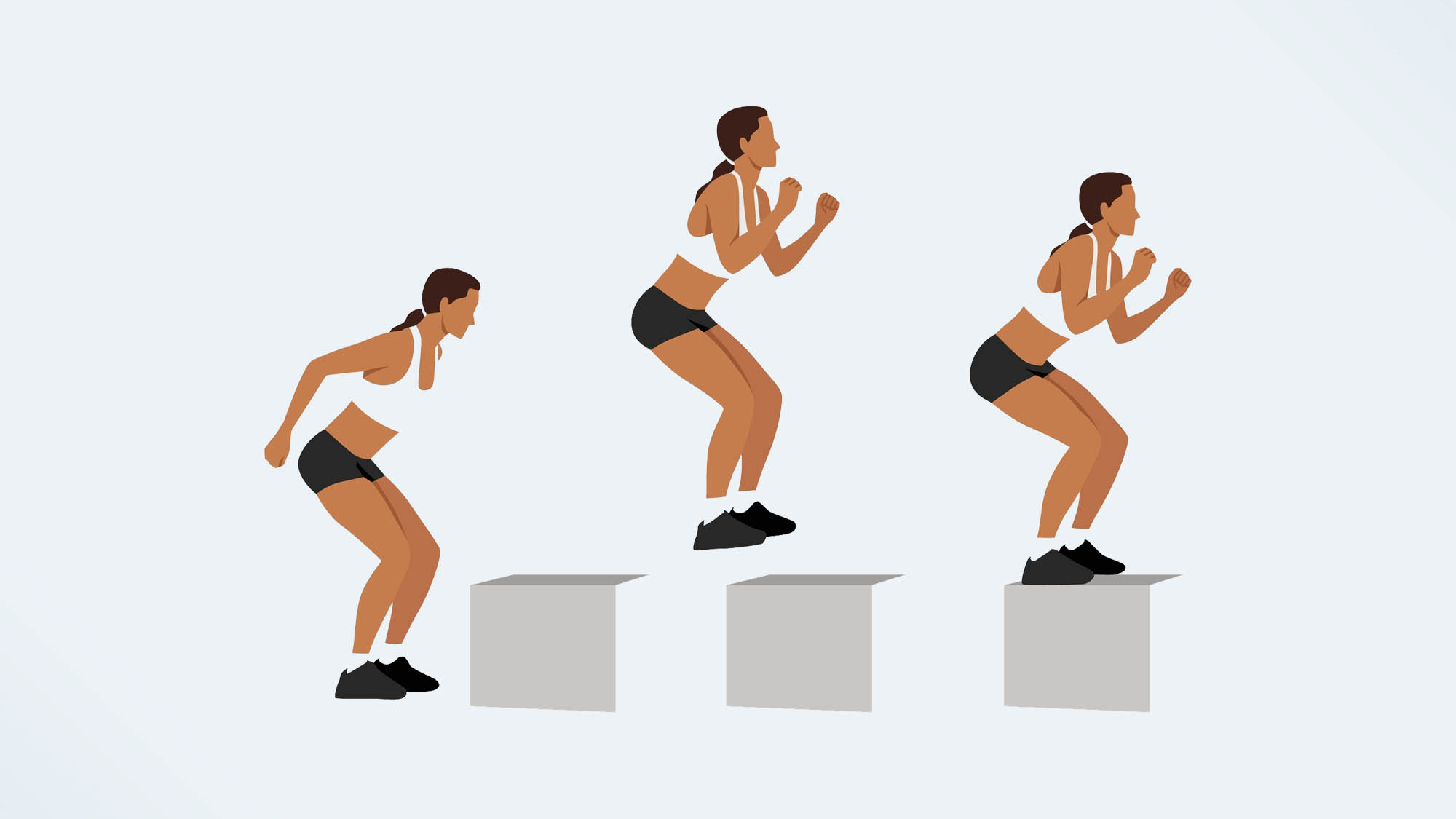I did 50 box jumps every day for a week — here’s what happened
Set your legs on fire with a daily box jump session

Want to throw a powerful, high intensity exercise into your workout? Look no further than the box jump. The mighty box jump might not appeal to everyone, especially beginners, or those recovering from an injury, but from a fitness perspective, this is an exercise with a multitude of benefits. To find out more, I added 50 box jumps a day to my daily routine — read on to find out what happened.
A box jump, as its name suggests, involves jumping up onto a box (or other tall items such as a high step or bench). The move requires power, balance, and stability. It’s a plyometric exercise, which is basically a "jumping" exercise.
It’s a great lower body movement, as the jump part of this exercise fires up all the muscles in the lower body, including the hamstrings, quads, glutes, and calves. Plus, the upper body and core are also required to help drive the body up onto the box, landing safely, before stepping back down.
Box jumps can be tricky to master, especially as you begin to increase the height of the box. They require you to land evenly with both feet, without falling forward, backward or to the side. I’ve always been a box jump fan, and as a runner, I find that I need to incorporate exercises into my workout that help to keep my legs strong and powerful. So, when asked to complete 50 box jumps a day for a week by the Tom’s Guide fitness team, I couldn’t say no!
How to do a box jump
For anyone who is unfamiliar with a box jump, here’s how to go about approaching this lower-body exercise. You might spot boxes at the gym, of varying heights. If it’s your first time doing a box jump, opt for the lowest box.
- Place the box in front of you, and stand with feet facing forward, about 15 cm from the box.
- Push your hips back and explosively and simultaneously, swing your arms forward whilst jumping up and landing on the box with both feet. Keep your back flat as you do this and gaze forward.
- Bend the knees and drop into a slight squat position. This helps to take some pressure off the knees. Then, step back down, one leg at a time, to the ground.

Fancy mixing up your jumps? Beginners could step up onto the box to start, standing tall at the top. This can help you get used to the height and the feel of the box.
You could also progress your box jump and either step down off the other side of the box, before turning around and jumping back on, OR, be brave and after stepping down from your box jump, drop into a burpee. Ouch!
Sign up to get the BEST of Tom's Guide direct to your inbox.
Get instant access to breaking news, the hottest reviews, great deals and helpful tips.
For the super brave, try jumping whilst holding a light dumbbell; this requires serious power, and shouldn’t be attempted if you’re new to the move. As always, it’s a good idea to ask a personal trainer to take a look at your form before progressing, to ensure you’re not putting yourself at risk of injury.

I did 50 box jumps every day for a week — here's what happened
My sprints felt easier
Although a week of box jumps wasn’t going to improve my running (it would need to be done more consistently and with rest days in between), I felt more powerful when it came to my treadmill sprints.
It does make sense — box jumps require lower body joints to not only extend but also flex, plus, as I mentioned, they really do work the lower body muscles, which are all pivotal for speed on sprints.
I burnt calories
50 box jumps a day won’t put you in a calorie deficit if that’s what you’re after, but I found myself burning around 100 calories doing this challenge (measured on my Apple Watch Series 8). However, it’s worth remembering that high-intensity training elicits an ‘afterburn’ effect, which means calories continue to be burnt, even after the workout is over.
I tripped up a good few times
After about 20 box jumps, things start to get a little monotonous. As my legs got tired, I began to trip up a lot more, with my feet missing the box, or my torso falling forward and my hands taking my fall on several occasions. As a personal trainer, I wouldn’t recommend starting out with 50 reps, and definitely wouldn’t recommend doing them every day. Start with five reps, and build up.
I mixed things up
By the end of the week, 50 box jumps a day was getting a little dull. To mix things up, I incorporated my box jumps into a wider workout instead. A circuit is a great way to add box jumps to your training — try 10 kettlebell swings, 10 barbell deadlifts, and 10 box jumps, five times, with minimal rest.
If it’s power, sweat, and a calorie burn that you want, then this cheeky little workout will do just that!
My legs felt it
I thought my legs were pretty resilient, but 50 box jumps a day really did leave them aching. Box jumps are an explosive exercise that requires all of the lower body muscles to engage to jump up onto the box. Although my legs didn’t hurt enough to not complete my seven-day challenge, I did incorporate some extra recovery sessions into my week. My trusty massage gun became my best friend — check out the best massage guns on the market here.
Box jumps certainly have benefits, including increased leg strength, lower body power, and improved stability and balance, when done correctly. But 50-in-a-row, every day? Never again! I tripped up and lost my balance more times than I’d care to admit, and generally found this movement monotonous.
Will I continue? I definitely am keen to keep box jumps in my workout routine; the benefits they can provide are really useful for my main sports of running and lifting. Would I recommend you do 50 box jumps a day? No, not if you’ve never done box jumps before. Start adding them into workouts, in small increments — say, five at a time — and also use a lower box.
If you’re not a beginner, but fancy building up some power in your lower body, look to increase your box height over time, giving your body new challenges. Whatever level you’re at, be careful and hone in on that form, landing softly on the box to protect your knees. Happy jumping!
More from Tom's Guide
Lucy is a freelance health and fitness journalist as well as a pre and post-natal personal trainer. Although a sweaty gym session (skipping rope is a must) is her favorite way to ‘relax’, she’s also a fan of bingeing on The Office, snacking on chocolate-coated raisins, and fizz-filled brunches with friends.

